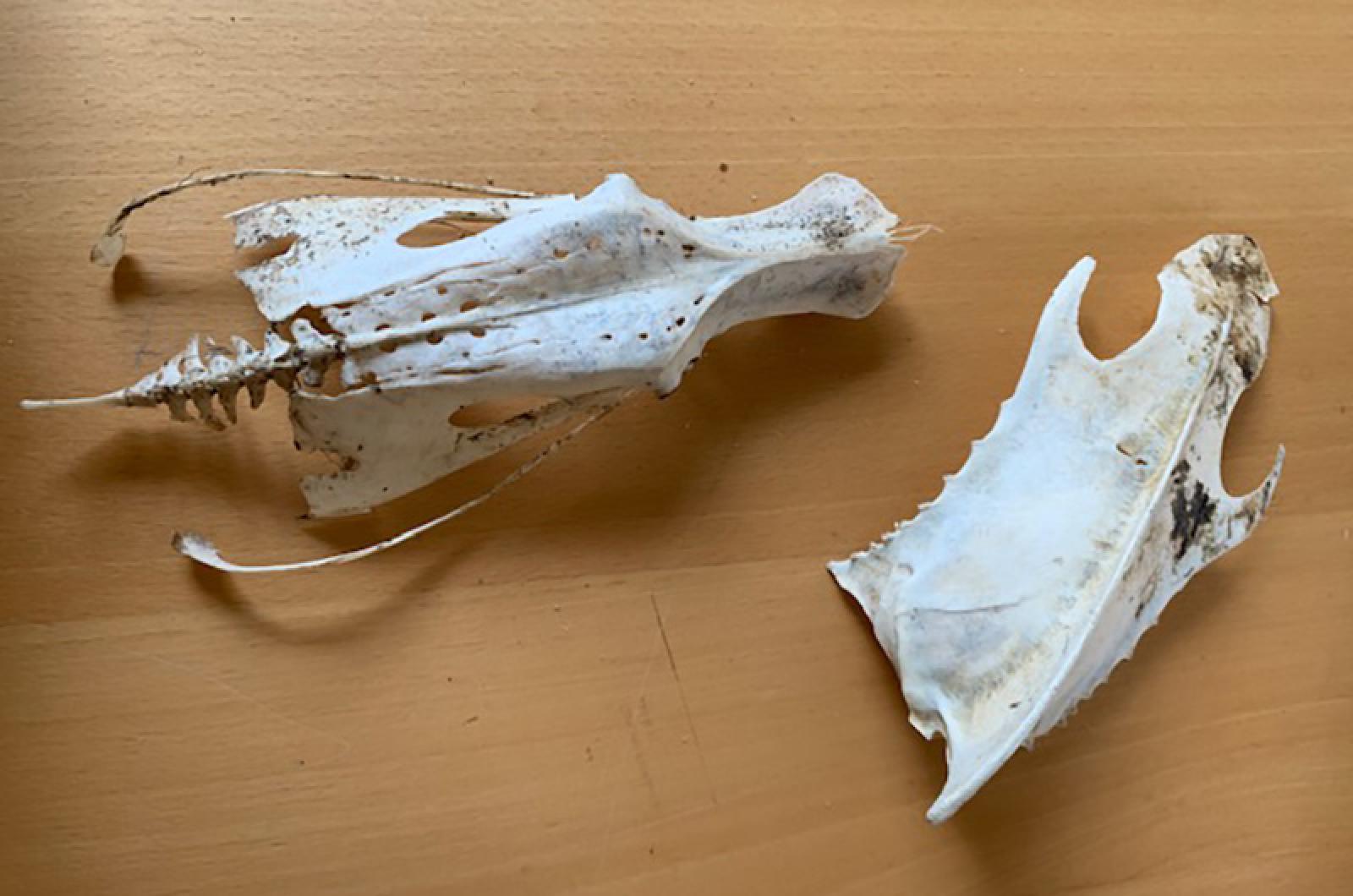Make no bones about it, birds are framed for flight.
The skeletons of our flying friends fascinate. Birds have a smaller total number of bones than mammals or reptiles. Often found on beaches, and in fields, yards, and woodlands, bones are one of the top items presented to us at Felix Neck for information and identification. A frequently-shared mystery bird bone is the synsacrum, almost always with the mistaken belief that it is a skull.
The synsacrum is part of a bird’s other side, the backside. Those posterior bones include the synsacrum, along with the pelvic girdle (ischium, ilium and pubis), caudal vertebrate and pygostyle (tail bone). These bones, like some other bird bone structures (including the skull and collarbone), are fused. The fused bones of the pelvic girdle reduce weight and provide stiffness, support, and strength for the muscles, feathers and leg sinews needed for take-off and flight.
On the flip side, the chest of the bird contains its pectoral girdle, which includes a keeled sternum or breastbone, clavicle, coracoid and scapula. Within the clavicle is the furcula, more affectionately known as the wishbone.
The bird’s ribs each have bony flaps, called uncinate processes, that stiffen the ribcage enough to handle the crush and pressure of flight. Interestingly, birds that do not fly, such as ostriches, have a sternum without a keel.
A bone of contention comes when we learn that many of a bird’s bones are hollow. The obvious conclusion that the hollow bones make birds lighter for flight is not accurate. In fact, the hollow bones must be denser for strength and to avoid breakage, containing crisscrossing trusses for these purposes. Due to their density, bird bones don’t weigh less than the bones of mammals of the same size—the skeletons of a bird and a mouse of the same mass, for example, have the same weight. In some cases, the bird bones weigh more.
However, bear in mind that the skeleton of a bird still usually weighs less than the weight of all of its plumage. Those bones are really light as a feather!
The bird bones’ hollow nature serves another purpose: oxygenation. With their high metabolic rate, birds need more oxygen to power their active lifestyle. Known as pneumatic structures, hollow bones (some with air sacs tucked in) are an extension of the bird’s respiratory system, serving as an annex of the lungs for increased oxygenation. Birds can take in oxygen with each inhale and exhale.
There are specializations within species for the incidence and prevalence of hollow bones: flightless penguins have solid bones and diving birds have few hollow bones, while soaring birds have more. Another ancient creature, extinct reptiles called pterosaurs, shared the hollow bone and the pneumatic respiratory system trick that today’s birds do.
Birds’ digits are different, too. Birds won’t work their fingers to the bone, since they have sacrificed dexterity in favor of flight function. To make up for the lack of agility in their forelimbs, birds use their beaks for preening; and, thanks to flexible necks, they can reach almost everywhere on their bodies. A bird’s neck contains from 13 to 25 vertebrae, allowing them to turn their heads for sight and grooming. Contrast that to our seven, and we could easily envy birds for almost having eyes in the back of their head due to their capacity for extreme neck rotation. An owl looking at us when we are directly behind it is a wonder one never forgets.
The adaptations of bird anatomy to the rigors of flight are works of both art and nature: They prove that a bare-bones approach really does work well.
Suzan Bellincampi is director of the Felix Neck Wildlife Sanctuary in Edgartown, and author of Martha’s Vineyard: A Field Guide to Island Nature and The Nature of Martha’s Vineyard.







Comments (1)
Comments
Comment policy »